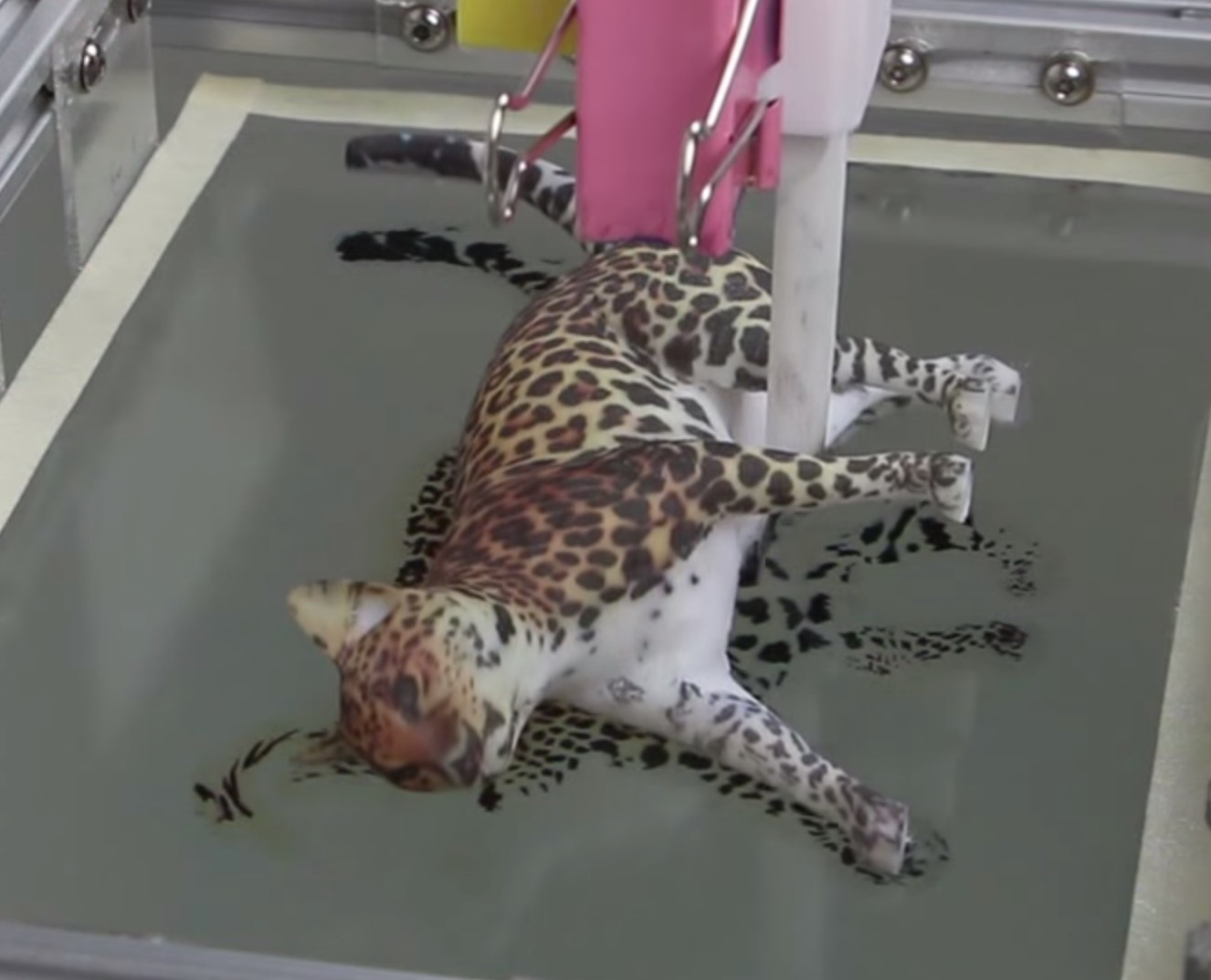
Wired reports on a potential method of coloring complex 3D prints: hydrographic painting. But is it really feasible?
Hydrographic painting is a technique few have heard of, yet you probably own several items that have been made using it.
It’s a peculiar method of painting that involves dipping an object into a tub to apply a paint layer. But before you dip the object, you must prepare the paint. A complex pattern is printed on a thin sheet of film, which is placed floating on the surface of the tub. The film softens, leaving the ink floating in place. Then when the object slowly dips into the water, the paint pattern adheres to the object’s surface. It’s a pretty amazing way to apply wild patterns to helmets and other irregular surfaces.
But you have little control over exactly where the pattern hits the object unless the object has an extremely simple shape.
Unless you computationally map the object surface’s dip path and print a paint pattern to match.
The idea is to use this computational technique to apply complex color patterns to otherwise mono-colored 3D prints. Printing in color has always been a challenge, both technically and financially.
But would this work?
We think it could work for certain object geometries, but it seems to us that there are many pathological shapes that simply could not make use of this approach. Imagine an object with isolated pockets, where surfaces are inaccessible to the paint layer.
Is color 3D printing solved with this? Certainly not. But it’s a technique that may work some of the time.
Via Wired

